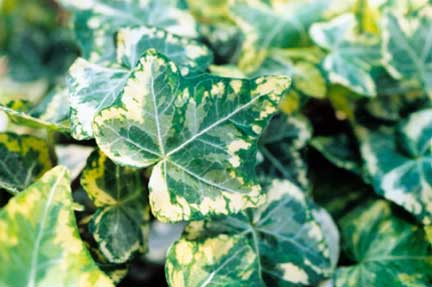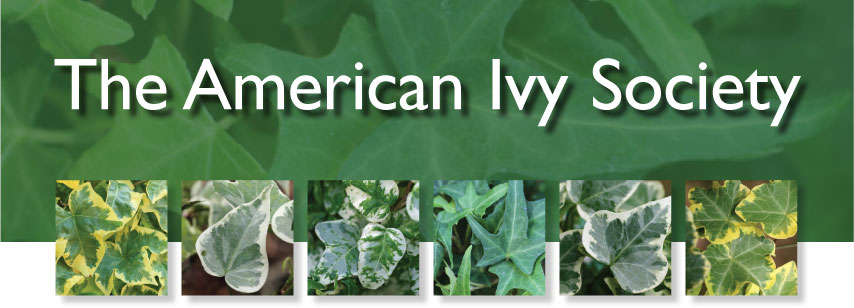|
Ivy of the Year 2003
Hedera helix 'Golden Ingot'

Hedera helix 'Golden Ingot' has been chosen as "Ivy of the Year 2003" by The American Ivy Society.
This variegated ivy, which came from Denmark, attracts immediate attention with its bright yellow leaves edged with dark green, and splashed in the center with vibrant green and gray.
It is a "Variegated" "Ivy-Ivy" in the Pierot Classification System. In field-tests Hedera helix 'Golden Ingot' has proved exceptional in many ways: It is hardy in cold areas down to minus 20 F. It can be grown in full sun to almost full shade, depending on where you live. It is easy to grow, moderately self-branching and not invasive.
The "Ivy of the Year" is chosen by a committee made up of members of The American Ivy Society, nurserymen and growers across the United States. 'Golden Ingot' underwent a three year trial period in various climate areas; Southern California, Ohio, and Pennsylvania.
The secret to successful outdoor planting of H.h. 'Golden Ingot' and all other variegated ivies is to plant them in lightly shaded areas that are out of winter wind and sun. The California nursery reported that they grew it in full sun for over 3 years, but cautions that although their "full sun" is sunnier than Pennsylvania or Ohio, the temperature is milder due to ocean breezes.
The Ohio test garden noted that H.h. 'Golden Ingot' came through many very cold winters without damage. It was grown in 40-50% shade and still maintained its bright yellow and green color.
The Pennsylvania grower commented that the gold is more intense in the springtime because of the bright light and cool temperature. The yellow gold coloration may go to a more creamy color in high temperatures. All variegated ivies have less intense coloring in the shade than where there is more light.
Fertilize with a balanced fertilizer. There is as misconception that you shouldn't fertilize variegated ivies because it encourages green growth. This is an old wives tale. All ivies, whether green or variegated, should have regular feedings.
"Ivy of the Year"
Because of the surge in popularity of ivy as a pot plant as well as in the garden, The American Ivy Society announced it will select an "Ivy of the Year" annually commencing in 2001. The ivy chosen from the nominees must be easy to grow, hardy, lush, beautiful, and not invasive in the garden.
The "Ivy of the Year" will be chosen by a committee made up of members of The American Ivy Society, nurseryman and growers across the United States. Each ivy will have completed the three year trial period in The American Ivy Society test gardens as well as in commercial nurseries.
When The American Ivy Society was founded in 1974 there were approximately 60 different cultivars of Hedera (Ivy) grown commercially. Today there are over 480 named cultivars. The intense interest in ivy began when people learned that the new ivies are available in an array of colors ranging from all shades of green, green and white to yellows and golds - and they are not invasive as were many of the older cultivars. Some ivy leaves are so delicately cut they resemble the print a bird's foot makes in the sand, while others are curly or fan shaped. They are used as groundcovers, garden specimens, hanging baskets, mixed containers, topiary and the adult forms of ivy are even grown as shrubs.

|
